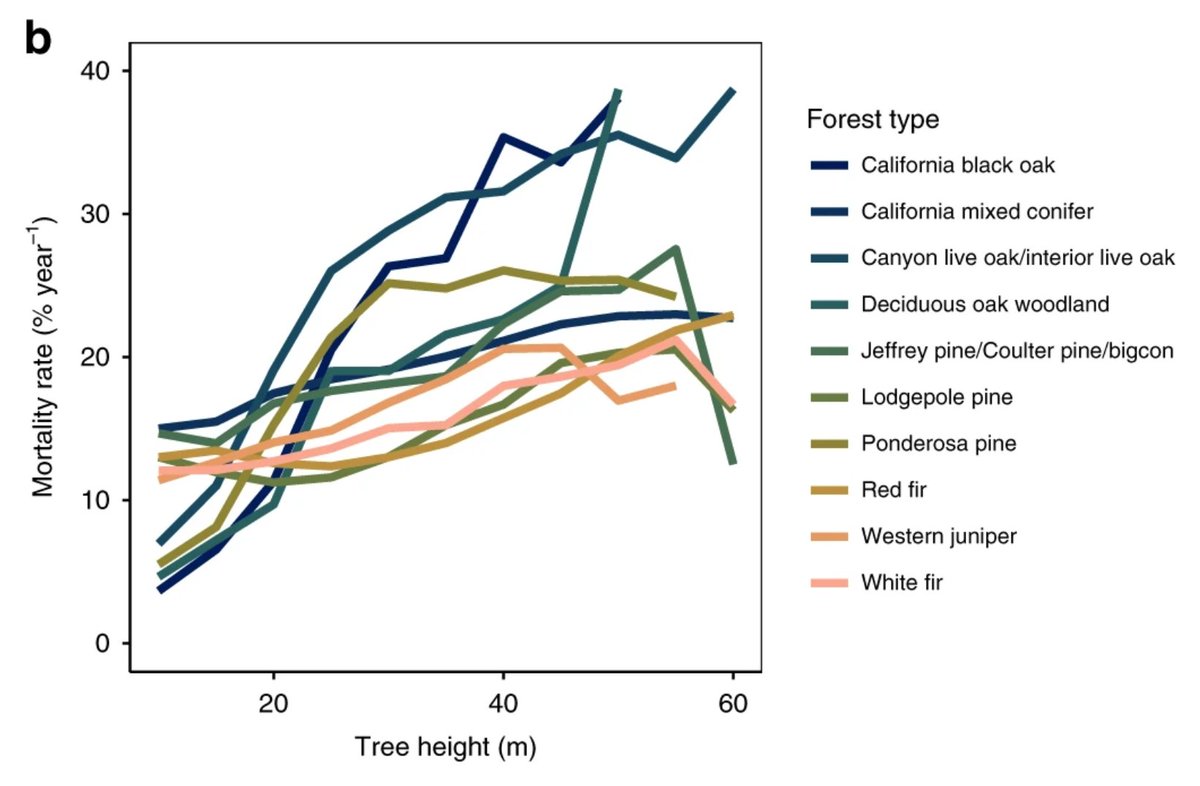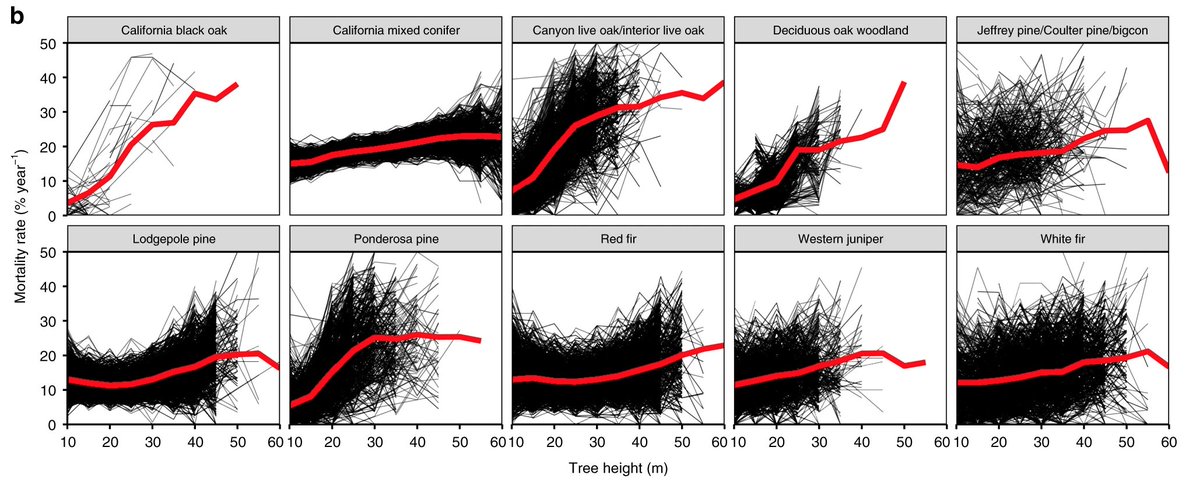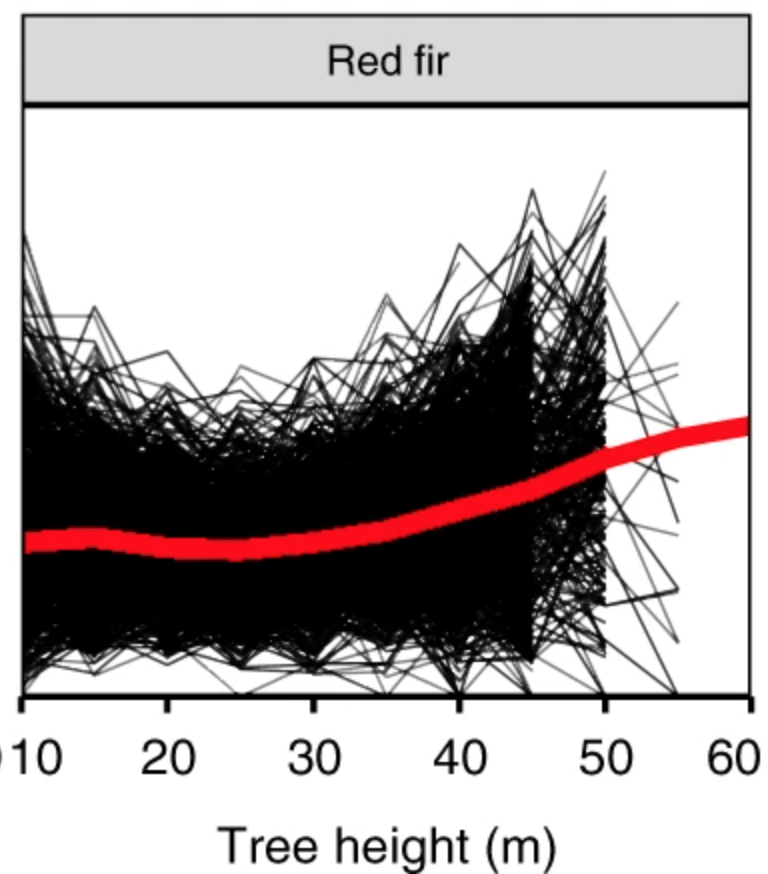Does taxonomy explain
We test this in 10
Mortality risk consistently
A THREAD 1/n
#OpenScience #OpenData #WhatKillsTrees https://go.nature.com/2ZKeBEF ">https://go.nature.com/2ZKeBEF&q...
NOTICE - this is a MATTERS ARISING article!  https://abs.twimg.com/emoji/v2/... draggable="false" alt="😱" title="Vor Angst schreiendes Gesicht" aria-label="Emoji: Vor Angst schreiendes Gesicht">
https://abs.twimg.com/emoji/v2/... draggable="false" alt="😱" title="Vor Angst schreiendes Gesicht" aria-label="Emoji: Vor Angst schreiendes Gesicht">
WHY? Our original work @NatureComms created a great conversation in the community.
We found tree height was the MOST important predictor of drought mortality.
2/n https://go.nature.com/3iEhbEV ">https://go.nature.com/3iEhbEV&q...
WHY? Our original work @NatureComms created a great conversation in the community.
We found tree height was the MOST important predictor of drought mortality.
2/n https://go.nature.com/3iEhbEV ">https://go.nature.com/3iEhbEV&q...
Soon after publication, Nate Stephenson (not on Twitter? YET!) got in touch.
THEY found:
1) tree TAXONOMY was the dominant control on mortality trends
2) height was only important in SOME species.
They responded with a rewrite of earlier work:
https://go.nature.com/2O04ZQI
3/n">https://go.nature.com/2O04ZQI&q...
THEY found:
1) tree TAXONOMY was the dominant control on mortality trends
2) height was only important in SOME species.
They responded with a rewrite of earlier work:
https://go.nature.com/2O04ZQI
3/n">https://go.nature.com/2O04ZQI&q...
Fascinating!
How can we reconcile risk from taxonomy and tree height during drought?
Instead of just defending our original article, we decided to add a totally NEW analysis of our ~1.8 MILLION trees!
4/n
How can we reconcile risk from taxonomy and tree height during drought?
Instead of just defending our original article, we decided to add a totally NEW analysis of our ~1.8 MILLION trees!
4/n
FIRST: we matched our ~1.8 trees to the USFS FIA forest type map.
In total the 40,000 ha area had 10 forest types.
In each we asked: does mortality increase with height?
5/n
In total the 40,000 ha area had 10 forest types.
In each we asked: does mortality increase with height?
5/n
Why did our results differ from the Comment on our original article?
We think plot-based forest sampling may be limiting our ability to capture landscape mortality trends.
So, we tested that too!
7/n
We think plot-based forest sampling may be limiting our ability to capture landscape mortality trends.
So, we tested that too!
7/n
We used our original dataset to make 1000 forest plot simulations of the EXACT random sampling scheme from the Matters Arising.
What we found was surprising....
8/n
What we found was surprising....
8/n
Mortality rate estimates from plot-based methods can vary by more than 50%!!!
Variability is mainly coming from:
1) plot placement
2) not enough large tree observations
9/n
Variability is mainly coming from:
1) plot placement
2) not enough large tree observations
9/n
If we zoom into a single forest type we see that mortality increases with tree height (red line).
BUT plot based estimates (black) are WAY too variable to reliably estimate this subtle LANDSCAPE-scale trend.
10/n
BUT plot based estimates (black) are WAY too variable to reliably estimate this subtle LANDSCAPE-scale trend.
10/n
A MAJOR problem with UNDERsampling the full landscape is a tendency to UNDERestimate mortality, especially in large trees that are rarely seen.
We would need ~1100 plots in our study area to capture only 10 trees ~60 m tall!
11/n
We would need ~1100 plots in our study area to capture only 10 trees ~60 m tall!
11/n
Solution?
Plot-based methods of capturing forest mortality rate NEED to be augmented with remote sensing!
Otherwise, we will not capture the TRUE landscape-scale mortality trend.
12/n
Plot-based methods of capturing forest mortality rate NEED to be augmented with remote sensing!
Otherwise, we will not capture the TRUE landscape-scale mortality trend.
12/n
Does height affect tree mortality during drought??
 https://abs.twimg.com/emoji/v2/... draggable="false" alt="💯" title="Hundert Punkte Symbol" aria-label="Emoji: Hundert Punkte Symbol">%!!
https://abs.twimg.com/emoji/v2/... draggable="false" alt="💯" title="Hundert Punkte Symbol" aria-label="Emoji: Hundert Punkte Symbol">%!!
Does taxonomy matter?
 https://abs.twimg.com/emoji/v2/... draggable="false" alt="💯" title="Hundert Punkte Symbol" aria-label="Emoji: Hundert Punkte Symbol">%!!
https://abs.twimg.com/emoji/v2/... draggable="false" alt="💯" title="Hundert Punkte Symbol" aria-label="Emoji: Hundert Punkte Symbol">%!!
Are they mutually exclusive?
***NO! They are interactive!***
13/n
Does taxonomy matter?
Are they mutually exclusive?
***NO! They are interactive!***
13/n
"We argue in favor of a broad height-mortality trend that is interactive and modulated by species-specific factors. Drought-induced tree mortality is controlled by a complex series of interacting stressors—not by a single binary factor"
14/14
#scicomm https://go.nature.com/2ZKeBEF ">https://go.nature.com/2ZKeBEF&q...
14/14
#scicomm https://go.nature.com/2ZKeBEF ">https://go.nature.com/2ZKeBEF&q...

 Read on Twitter
Read on Twitter




